
Polar Grit X2 Pro Review – Titan Edition
also check the smaller: Polar Grit X2 Review
Rugged, durable and easy on the eye, the Polar Grit X2 Pro doesn’t match the mapping and routing features of the Garmin Epix 2 for serious endurance endeavours and adventures. Worse still, Polar’s Titanium model is a whopping $200 more expensive than any previous watch by the company, yet it offers nearly identical capabilities to the Vantage V3.
X2 will convince some people to switch to Polar by its merits. Still, if you’re a runner who already loves the Polar ecosystem or outdoor aesthetics, this is precisely the watch you’ll want for your mini expeditions. It’s a solid piece of kit.
The latest Grit X2 sits at the top of Polar’s watch range. It’s noticeably faster and smoother than the 2020 model, and it’s undoubtedly sturdier and longer-lasting than Polar’s other watches.
X2’s bezel is textured and chunky in a pleasing way, and its buttons press nicely. However, the MIL-STD accreditation means they’re a little harder to access than you might like, especially if you’re wearing gloves. Combine that with last year’s new high-resolution colour touchscreen, customisable watch faces and complications, and the whole package nicely meshes together.
Better still, the titanium edition and scratch-resistant Sapphire glass are perfect for the most arduous expeditions and probably worth stretching to if you can afford them. The display is highly readable, but don’t forget to set the do-not-disturb sleep times; otherwise, the light will keep you and your partner awake!
**If** Polar was trying to de-throne Garmin adventure watches like Epix and Fenix. It’s failed, but as a stepping stone for the future or as a watch for weekend warriors and occasional triathletes, it’s a good call if you like the looks, and current Polar owners will love this as an upgrade.
- Grit X2 Pro: Night Black £650, 750 ($/€)
- Grit X2 Pro: Night Stone Grey £650, 750 ($/€)
- Grit X2 Pro Titan: Autumn Leather and Black Silicone £750, 870 ($/€)
- Grit X2 Pro and a Polar H10 Bundle: £690, 800 ($/€)
At $870, the X2 Pro Titanium (Sapphire) is expensive and superficially compares well to the Garmin Epix 2 Pro Sapphire (titanium) at $999.
For the X2 Pro Sapphire (non-titanium) at $750, Polar would like you to compare it to the Garmin Epix 2 Pro Standard (inferior Gorilla Glass) at $899. However, a more realistic comparison is to the older Epix Gen 2 Sapphire at $899 (which Garmin now discounts to $599). ie Polar asks a $150 premium for similar hardware but fewer software features. Polar must eventually discount Grit X2.
Here is a summary review of Polar Grit X2 Pro, and afterwards, there is detailed coverage of some of Polar’s key sporting features, some tips, and my recommendations.
Verdict: ⭐⭐⭐⭐ - Reassuringly expensive and awesome-looking. Great sports features and improving adventure features.
Polar Grit X2 Pro Review Summary
Polar Grit X2 Pro is the best and most expensive watch Polar has made. It’s a rugged version of the Vantage V3 with a more outdoorsy look and is made of high-quality materials.
Whilst the features are accessed like every Polar for the last five years, the X2 Pro has a beautiful colour AMOLED touchscreen made with sapphire glass, excellent battery life, and durable buttons. These all make using the watch a pleasurable experience.
It’s medium-to-large size and outdoor aesthetics are not for everyone; maybe it’s too big for your wrist or not as sleek and light as a sports watch.

Looks great, works well.
With onboard maps and routing features, Polar competes with Suunto for everyone who doesn’t buy an Apple Watch Ultra or Garmin Epix. Polar lacks the smart features of the Apple Watch and lags behind Garmin’s extensive but complex navigation offering. That said, mapping features are a relatively new venture for Polar. They will soon catch up some of the way.
If we look further into general activity recording and running, Polar has an excellent ecosystem highly suited to most athletes’ needs.
Polar’s new watch for 2024 has several new features, but the pace of improvement needs to increase. Contrast Polar’s improvement to Apple Watch Ultra 2, whose predecessor was almost identical, leading you to question what changes it will deliver in the future.
No doubt Polar will further boost its new routing and mapping features soon. The problem is that all of these features will be catch-up features. If Polar always plays the catch-up game, it can only compete through brand loyalty and price, but the price is too high. Apple tried to re-imagine some outdoor features, and Polar appears to use the same approaches as its competitors.
That said, if you love the Polar ecosystem the aesthetics of this watch, and don’t venture into the wilderness too often, then I can recommend this watch.

- Grit X2 Pro: Night Black £65https://geni.us/PolarGritX2Problack0, 750 ($/€)
- Grit X2 Pro: Night Stone Grey £650, 750 ($/€)
- Grit X2 Pro Titan: Autumn Leather and Black Silicone £750, 870 ($/€)
- Grit X2 Pro and a Polar H10 Bundle: £690, 800 ($/€)
Pros
- Excellent quality case and lens: MIL accreditation, WR100 and sapphire lens.
- Easy-to-use screens and menus
- Great AMOLED touchscreen + buttons
- Battery life matches Garmin Epix
- Add your own GPX routes or sync from Strava/Komoot
- TOPO maps
- Elevation profile
- New metrics for vertical progress
- Several leading-edge recovery & physiology features
- All of Polar’s excellent sports features
Cons
- At launch, HR accuracy needs further improvement
- Cost
- Turn-By-Turn only with Komoot
- No on-watch map intelligence
- No POIs
- The barometer does not give storm warnings or absolute values
- Limited/no indoor cycling/ANT+ sensor support
- Limited smart features
Polar Grit X2 Pro – What’s New
This is everything seen for the first time in any Polar watch. Unless stated otherwise, Vantage V3 gets each update.
- Remodelled exterior (Not Vantage V3)
- New integrated GPS antenna design (Not Vantage V3)
- Elixir HR algorithms are changing. The oHR you see on the screen during workouts is not necessarily what will be saved. Assuming that Elixir gets a good 15-20 seconds of HR, it can correct errors and modify the past 90 seconds when saving. That is a live and continuous process. Thus, live HR on your watch, broadcast HR saved elsewhere, and the HR that Grit X2 Pro saves could all be different. That sounds strange, but it makes sense, and some competitors have already done this.
- From a techy perspective, the file structure previously used by Vantage V3 to store maps is inefficient and has changed. The end effect is to improve the speed at which maps are displayed during navigation.
- Two new AMOLED watch faces (FW2.0 on April 3rd)
- Water resistance to 100m (WR100 was WR50)
- Strava Route sync (but not TBT)
- NEW Feature: VAM shows the vertical climbing rate, and the new 3D speed seems to be similar to Garmin’s 3D Pace. 11 new metrics are included to support this feature – VAM (30-sec avg, lap, auto lap, hill, max hill) and Vertical speed (Vertical speed 30-sec avg, avg lap, max lap, avg hill, max hill). Previously VAM was on V800/V650 for cycling.
- NEW Feature: The Planned Route & a Breadcrumb Trail together clearly indicate the route you are following and the path you have taken. Handy for retracing your steps. Includes on/off-route detection
- NEW Maps: Detailed Topo (contour) maps can be manually added to the pre-installed regional maps via https://flow.polar.com/maps
- Maps are accessible via the Navigation view outside of training.
- Improved route sync
- New watch face styles and widgets
- Heart rate, speed and power graphs now show data for the last ten minutes
- Battery Mode Clarification: Polar’s battery performance claims have been changed to be comparable to those of competitors. There is no way to choose these modes with a single button press. At least not yet!
These are changes that are carried over from Vantage V3 that were absent from the original Grit X
- Polar Elixir – The next-gen oHR sensor that adds ECG, SpO2, wrist temperature, and PAT for artery health and Blood Pressure.
- High-accuracy dual-frequency, multi-constellation Sony GPS Chipset
- Offline Maps: Turn-by-turn Komoot routes, 32GB of storage
- Increased CPU speed: The 275MHz processor claims to be 129% faster. Onboard thinking memory is increased to 37Mb from 0.64Mb, Bluetooth 5.1 is used to connect to sensors and there is no ANT+ support
- Long battery life: Up to 43 hours of training time with each charge, up to 10 full days of display time and up to 140 hours of training time when in power-saving mode.
- USB-C to proprietary charging: 2-hour recharging time
- ‘Flashlight’ – a bright, screen-based light with quick access from the top-screen pull-down menu.
- Also added are Voice Guidance, Walking Test and the Work-Rest guide that we saw in Ignite 3 (which was Polar’s first AMOLED watch, effectively a prototype)
- A comprehensive suite of training, recovery, and sleep tracking tools, including Performance Tests, Recovery Pro, Nightly Recharge, Sleep Plus Stages, and SleepWise. These are all great but could be packaged more appealingly.
- Polar Flow: It’s a good ecosystem for your exercise and sleep data. The app now looks a little dated, but I still like it. The web interface is very dated, but I love it!
This is the evolution I expected to see from the old Grit X to the new. The software is identical to Vantage V3 and the outer casing is ruggedised for adventures. The 3 new software features seen at launch are little more than a few tweaks but are nice nonetheless.
Polar Grit X2 Pro – A Brief Timeline & History of Polar Watches
Polar has three years of experience with adventure watches, combining a fine pedigree of running watches for over two decades.
I was looking at Polar’s recent product history. After a few brief, unsuccessful forays into bike computers, Polar re-focused on fitness and running watches and expanded its range to tackle triathletes more seriously. Its last move was into outdoor adventure watches with the original Grit X, followed soon after by adopting on-watch maps, albeit not the routable kind.
Polar has developed some smartwatch features like music control but lags behind Garmin, who lags behind Apple, and cannot. Polar hopes to include card payments or music streaming (although I’ve heard they are considering the former). There are now distant memories of a Polar Wear OS watch, which, had the company continued with Wear OS, would have given them a set of smart features to beat Garmin. However, that ship has probably sailed, with Google and Samsung set to ringfence Wear OS for themselves going forward.
Polar has a market-leading set of physiology features, lab-grade accessories and training plans for more advanced runners.
Here are Polar’s recent watches
- Polar Grit X2 Pro: Outdoor Adventure Watch with Maps, 2024-03-20
- Polar Grit X Pro: Outdoor Adventure Watch, 2021-10-06
- Polar Vantage V3: Triathlon Watch with Maps, 2023-10-11
- Polar Vantage V2: Triathlon Watch, Oct 2020
- Polar Vantage V: Triathlon Watch, 2018-09-13
- Polar Vantage M2: Triathlon Watch, 2021-03-24
- Polar Vantage M: Triathlon Watch, 2019-02-27
- Polar V800: Triathlon Watch, 2014-01
- Polar Pacer Pro: Running Watch, 2022-04-13
- Polar Pacer: Running Watch, 2022-04-13
- Polar Ignite 3: Running Watch, 2023-06-14
- Polar Ignite 2: Running Watch, 2021-03-24
- Polar Ignite: Running Watch, 2019-06-26
- Polar Unite: Fitness watch, 2020-06-30
- Polar M600: Wear OS Smart Watch, 2016-10
- Many others.
Polar Grit X2 Pro Design: Rugged, but in a nice way
From a short distance away, they’d be none the wiser if I told most people that the Grit X2 Pro titan was a Garmin Fenix/Epix. It does look like a Garmin. Maybe that’s because Garmin nailed the populist aesthetics of an outdoor watch years ago. Suunto, Apple Watch Ultra and Coros watches look different to Garmin watches.
It’s also worth noting that the Titan model has an extra strap and a different bezel to the non-titan version.
Putting aesthetics aside, the Titan version is a 64g watch correctly designed for outdoor adventure, though perhaps too heavy for an ultra runner.
I have zero issues with overall design, even though it’s not what I prefer. Some details are great like a lens height below the bezel for added protection and the case bolts on the front to aid WR100 waterproofing. If I had to nit-pick, it would only be with the buttons protected by ‘bumps’ on the case and slightly get in the way when wearing gloves – Polar says this was required to secure improved MIL-STD ‘H’ accreditation.
The reverse looks fine. I would perhaps criticise the slightly fiddly magnetic charger, which could be easier to put on and could use a stronger magnet but it’s fine.
The button or touchscreen interface is great and works logically
Polar Grit X2 Pro Display: Big And Bright
Sitting favourably on the Unnecessary Scale, the 1.39″, 454x454px (326ppi) resolution AMOLED touchscreen display is 15% larger than the previous Grit X Pro. The screen emits a maximum brightness of 1050 nits and can be dimmed to save battery.
The screen is beautifully clear and vibrant, and the touch functionality is good. I tended to use the maximum brightness and enabled the always-on display just for the running sports profile.
If I had to be negative, I would say that I need more ways to show off this great screen with a greater choice of more detailed and data-richer watch faces.
Polar Grit X2 Pro Sensors + Connections: Adequately Connected
Grit X2 Pro has every commonly available onboard sensor but only connects to external sensors using Bluetooth, not ANT+. External power meters, heart rate monitors, temperature sensors and STRYD are covered.
The magnetic compass and barometric altimeter are must-haves for adventurers who need to know their place in the environment around them. Perhaps of lesser use would be ECG and SpO2. Both err towards wellness applications rather than sports. The onboard dual frequency GNSS/GPS chipset is one of the market leaders. Alongside the optical heart rate sensor and accelerometer, it forms the cornerstones of all the useful sports data this watch gathers. HRV, recovery readiness and running power all flow from these core sensors.

A nice touch is the ability to broadcast wrist heart rate for gym equipment or a bike computer. However, serious cyclists would say a bigger omission is the ability to control the resistance and incline on some gym equipment with FTMS or FE-C. But a serious cyclist really should buy a dedicated bike computer.
Traditional sports sensors use ANT+ connections, but Polar will never support those. Garmin remains the only significant sports watch company that supports ANT+. Almost every other app and watch uses Bluetooth, including Polar, Apple & Suunto.
Take Out: Polar Grit X2 Pro 2 has most of the capabilities needed to support commonplace sensors and connections. Whilst it might lack support for ANT+ and all cycling sensor types, it covers the bases for runners and adventurers.
Polar Grit X2 Pro Comparisons and Sports Suitability
I’ll look at running, triathlon and adventure hiking and tell you the gaps where the Grit X2 Pro fails to deliver.
Q: Is Polar Grit X2 Suitable for Running?
Yes, the Grit X2 Pro is highly suited to running at any level and for any distance up to a marathon, but you might find it a tad on the bulky side for an ultra. Polar has ticked off almost all the mainstream running features plus some esoteric ones like Running Power, advanced training plans, a season planner, FuelWise dynamic fuelling and hydration strategies, training targets, voice guidance and Ground Contact Time metrics. It glaringly lacks the track mode of Coros, Apple and Garmin.
Heart rate zones and other zones are fully supported and can be used to pace your efforts and lock them to your current effort. Other workout targets are easily possible based on calories, distance, pace, power and time.
Serious athletes can build, favourite and follow complex workouts and schedule an entire season of workouts from your library. As an example of what’s possible, you could create and follow this workout:
15-minute warmup with a power alert range of 150-200w: 5 repeats of 1km with a pace target of 4:00/km each followed by 3 minutes recovery; and then all followed by an open cool down.
Q: What Major Running Feature Will Polar Add Next?
A: The essential running features of Grit X2 and Vantage V3 appear complete in Polar’s eyes. Perhaps Track Mode will be added.

Q: Is the Polar Grit X2 Pro for Triathlon?
A: Yes. Polar Grit X2 Pro is also classed as a triathlon watch with good features that are more than suitable for any distance up to Ironman. If you plan to take triathlon seriously, competing in multiple races, then you would opt for a Garmin 965 to bag several niche triathlon features like auto-transition, ANT+ and better indoor cycling support.
Grit X2 Pro has highly configurable multisport profiles that are out of the box. These are configured on FLOW with settings for each sub-sport and each training metric.
Q: What Major Triathlon Feature Will Polar Add Next?
A: Swimming. Polar has a decent set of swimming features, and it is already on a second iteration. But Polar lacks more unusual swim features like a drill logger and compatibility with advanced, race-legal open water swim aids – i.e. FORM Swim goggles.
A: Triathlon plans. These would be hard for Poalr to add, and I don’t expect that to happen soon.
Suitability for Adventure Hiking: More on navigation
An adventure hiker has a smartphone backup all weekend, whereas an explorer has a backup of a physical compass and a paper map to give reassurance over week-long trips out of cell range.
Watches like Garmin Epix 2 and Polar Grit X2 Pro are probably best suited for adventure hikers. The AMOLED screen on both watches eats battery for week-long trips, you can take a battery pack of course.
Apart from the battery, both watches are pro pieces of hardware that can take more than a few knocks and the most inclement weather on longer trips. The suitability of the Polar comes more from your experience and navigational abilities coupled with the complexity and danger of the routes you follow.

Polar discontinued its route creation feature, EXPLORE, in 2020. That move made sense for Polar, as keeping a complex route creation feature up and running is costly. Instead, Polar lets you import GPX route files or automatically sync routes from Komoot or Strava; a subscription is required to create a route with the latter.
You might have to sync Flow with Strava/Komoot and then Grit X2 with Flow. That’s a few more clicks and taps than I’d like, but not the end of the world.

The route is typically chosen before you start the activity, and once you’re looking at the map screen on the watch, it’s nice. I’ve seen more detailed maps, but these do the job.
If you go off route, Grit X2 can direct you back to the route as the crow flies, or you can lock onto a bearing and make your way. Only Garmin can navigate you back onto the route via known trails. Both Garmin and Polar can retrace steps if you get lost.

In most circumstances where you’ve deviated slightly from the route, a simple map screen quickly gives visual cues to guide you back on course. Polar’s map also includes a breadcrumb trail indicating your actual route (in red below).
I doubt Polar intend to have on-device map intelligence/re-routing in the foreseeable future. Unlike Suunto, Polar can’t do this with a navigation engine on the smartphone app and doesn’t plan to as Explore was retired. Adding re-routable maps to the watch and all the logic that comes with it would be a very significant undertaking for Polar.

With the exceptions of the ‘back to start’ and ‘elevation profile’ screens, Polar has no user-selectable navigational metric. However, the distance to go is shown on the map screen (above).
Other Map Features: Back to start, map selection, compass calibration, map orientation, reverse route, navigate to the start/end/mid-point, your location, pan and zoom
Q: How does Polar make Grit X2 Pro a true competitor for outdoor adventurers?
Polar must add more navigation and routing features to compete on equal terms with Garmin at the high end of the outdoor adventure market. Namely, add map intelligence on the watch to permit re-routing, increase its map layers (wind, weather, POIs), comprehensively cover many aspects of POIs, and more widely support turn-by-turn instructions when routing.
The last of those should be straightforward, but the first may not even be possible in Polar’s ecosystem. The middle two represent a couple of years of work, judging by recent progress at adding features.
The main issue is that Polar is playing catch up with limited resources. It is trying to copy what others have already done rather than re-imagine what is needed which Apple did to some extent with its automatic detection of Trail Heads and innovative compass and Waypoint screen.

Navigation Aid: Sunset/sunrise/phase
This information is synchronised with the FLOW app and appears on either a watch face complication or a widget. Tapping either of those gives sunrise/sunset information for today and tomorrow. Nice
Navigation Aid: Map flow & Altitude
Maps can be accessed through a watch face complication, widget or from within the workout. The high-level map screen is strange and looks unfinished. I would expect to see a zoomed-in local map by default.
That said, the compass, altitude and altitude history screens are fine. Calibrate manually at known points to avoid altitude drift during changeable weather. Polar would benefit from a Garmin feature that automatically associates altitudes with manually determined points like your front door as you leave to ensure frequently corrected altitudes.
When you start any workout, the altitude is determined by 3D-GPS and re-checked using the same method. After that, changes are made based on air pressure chases or manual calibrations. The entire elevation track appears auto-corrected in FLOW based on the recorded GPS position and a DEM (Digital Elevation Model).
Navigation Aid: A Pretty Weather Widget
The weather widget screen is one of the prettiest on any sports watch. In addition to current temperature and weather, there are moon phases and temperature forecasts. Wind direction and general weather forecasts for 3 days can be tapped from that widget.

Navigation Aids: No Weather Radar Map or Barometer Readings
There are no weather map visualisations to overlay the current TOPO (contour) maps and no way to read the barometric pressure or see changes in it.
There are no weather alerts linked to pressure changes.
Deep Dive Polar Grit X2 Sleep, Stress & Recovery Metrics: Physiology
Polar has a whole raft of excellent physiology and sleep metrics. Generally, they work from wrist heart rate and HRV, with some becoming relevant only when you wear the watch most of the time. The features are on the watch or smartphone app, but some can be found on the FLOW web portal.

Sleep
Polar has a complete set of advanced sleep features, including Sleep Stages and publishes the supporting science it relies on here.
Recovery
The most helpful recovery stat for me was the Nightly Recharge shown on the watch; the ANS charge seemed to correctly identify when I felt terrible in the mornings before getting up. Although I’m not entirely sure why I need a watch to match what I feel!!
You could delve into some of your recovery details to see if the duration and type of sleep you experienced contributed to poor nightly recharge or if the cause might lie elsewhere with your inability to cope with life’s stresses (HRV). If those stresses are training-related, another screen, Cardio Lod Status, might help your understanding and suggest that you ease off training intensity.
Other stats like breathing rate and nightly temperature changes can indicate stress and are important metric for female cycle tracking.
A further way to assess recovery for the more athletic types is to use Polar’s waking 4-minute Orthostatic Test. The test involves lying and standing and is validated using RR/HRV recording from a chest strap like Polar H10. A similar Polar test is the Leg Recovery test.
A final recovery feature is ‘Work Rest’, which determines the optimal recovery between intervals by assessing the maximum achieved heart rate and anticipated recovery durations.

Deep dive: Training Plans, Suggestions & Favourites
Polar has a huge set of features that cater to various abilities with running plans for the main race distances. Polar’s plans support much faster athletes than those offered by Garmin.
- Follow a plan: Create and calendarize a plan on Polar Flow for your race distance. You are prompted to follow workouts each day, and the plan includes non-running workouts to support your progress.
- Unstructured suggestions: Polar recommends suitable workouts for today based on your recent training, freshness and abilities.
- Targets for the day – you might want to run a certain distance or pace or achieve another target. You can create a workout for that and save it as a favourite on the watch to re-use multiple times.
- Strava Live Segments – You might want to try to beat your best over your favourited Strava segments.
- Automated Strength workouts include animated graphics to indicate the technique.
- Simple intervals – you can create simple intervals on the watch
- Just run
Deep Dive: New outdoor training metrics
Newly added outdoor training metrics give you insights into your progress vertically and horizontally, adjusting for altitude gain.

The new outdoor training metrics are Vertical speed, Ascent Speed (VAM) and 3D Speed, these being available for the following sports: Hiking, Trail Running, Cycling, Road cycling, Mountain biking, Downhill skiing, Snowboarding, Mountain biking, Orienteering, Ultra Running, Telemark skiing, Backcountry skiing, Snowshoe trekking, Climbing (outdoor), Off-road triathlon, and Off-road duathlon. More: polar.com
Vertical speed is an instant, real-time measurement of ascents and descents used to calculate the ascent rate per minute based on altitude changes. VAM measures your average ascent speed per hour as a 30-second rolling average.
Polar includes these new metrics: VAM (30-sec avg, lap, auto lap, hill, max hill) and Vertical speed (Vertical speed 30-sec avg, avg lap, max lap, avg hill, max hill)
Deep Dive: Watchfaces
The entire point of buying an AMOLED sports watch and taking a battery hit is that you will use it outside of sports. Watchfaces are essential for how they leverage the detail and vibrancy of the display to the smart information they convey.
Polar added more face styles and widgets this time but still needs to go further.
At present, there are four layout templates to choose from

Then you can choose the background, hands, dials and colours

Finally, you can add up to 4 data complications if your template allows it. Some of these complications are especially useful for hiking namely elevation, weather, sunset/sunrise, compass and the virtual flashlight, which are smart shortcuts to other screens.

Competitor Comparisons – Suunto, Coros and Polar
Polar Grit X2, Suunto Vertical, Coros Vertix 2 and Apple Watch Ultra 2 offer comparably rugged and excellently made alternatives to Apple and with better sports-adventure features. However, none of them are as good as the Apple Watch for smart features (iPhone integration), and they lag behind Apple Watch ULTRA 2 for the quality of wellness data/features. Thus, if you want a dedicated sports/adventure watch to support your fitness and activities, these brands offer suitable alternatives. If you want the whole 24×7 smart package and restrictive battery life…get Apple.
- When to opt for Suunto – Suunto’s strength is adventure-focused activity, producing quality outdoor watches with great sensors. Suunto’s on-watch map features are similar to Polar, but it has superior map and navigation support on its smartphone app.
- When to opt for Garmin – Garmin has all the features, such as being the leader for navigation and triathlon. Garmin has re-routable, intelligent maps on the watch and does not need a smartphone during your adventure.
- When to opt for Coros – Coros is cheaper than Garmin and has many high-level tick box features, but sometimes the details are lacking. Coros’ on-watch map features are broadly similar to Polar’s, with better routing/map support on its app. Coros does not yet offer an AMOLED option.
- When to opt for Polar – Polar’s strength is its runner-focussed and fitness-focussed ecosystem. Its mapping features are new and improving. Polar has many features, more than you probably need, just not as many as Garmin. If you want something that maximises ease of use, then Polar (and Coros) are the ones to go for.

Polar Grit X2 Pro Accuracy Tests & Performance Review
TL;DR GNSS/GPS is pretty good, and Polar knows it needs to improve the performance of its new Elixir optical heart rate sensor further. All other onboard sensors are suitable for the varied needs of hiking and outdoor adventures; however, runners and cyclists who want maximum accuracy will use the best sensors, like Polar H10 and the Stryd footpod.
In my tests, I’m looking for high levels of accuracy in all conditions for all sports. I want positional accuracy to be no worse than 5m, HR accuracy to be +/-2bpm, and elevation accuracy to be +/-5m. You’ll have to make a call on what levels of accuracy you need. If you want a pretty track of your workout on Strava or Komoot, most watches will give you that, but no watch guarantees accurate optical HR in every scenario.
Polar Grit X2 PRO GNSS/GPS Accuracy Tests Results
Polar uses the latest generation of dual-frequency GNSS chipsets. Unlike Garmin and Coros, Polar chose the Sony chip over Airoha/MediaTek.
The results you experience in your sports depend on several usage factors, antenna design, and algorithms used. It’s worth noting that Polar updated its antenna, moving from the Vantage V3 to this watch.
TL;DR – The results are mostly good but not excellent. GPS tracks aren’t as smooth as expected, including under tree cover. Furthermore, the benefits of dual frequency do not seem to be leveraged when running near tall buildings with the GPS track deviating, indicating it uses reflected signals. There are also other more benign conditions where I would expect more precise tracks.
I’ve performed a LOT of GPS tests over the last month. Here is a selection showing images of the overall route and then a point or two of note from the route on the subsequent image(s) in the gallery. There is nothing of concern here…I just want a bit more consistent accuracy.
Grit X2 Pro Heart Rate Accuracy – Test Results
These test results are from the production firmware incorporating the latest HR algorithms. Polar’s latest HR algorithms retrospectively correct the stored HR if your wrist is relatively still for about 20 seconds ie it can correct intervals and weights if needed.
When running, I deliberately simulated various cadences to trick the Grit X2 Pro into producing a cadence lock error. It didn’t. These results include efforts close to my HRmax for cycling and using mixed surfaces – ‘bumps’ can affect HR.
In a nutshell, there’s something not quite right here, and there seem to be at least two situations that cause errors. Polar knows of these bugs that others and I have reported, so there’s little point in me testing further, as Polar will change the algorithms.
Elevation Test Accuracy
Elevation is OK.

HRV Correlations
These are the correlations of overnight HRV averages to a daily 2-minute HRV reading taken with a Polar H10 and HRV4Training. While both measure how your body handles stress, they are not precisely comparable. That said, there should be a reasonable correlation to baseline in my opinion.
Polar is the best here, but I would expect higher correlations.

Polar Grit X2 Pro Battery Life: Excellent.
Q: What is the Polar Grit X2’s battery life?
A: The Polar Grit X2 Pro has a battery life of 43 hours, extendable to 140 hours in performance training mode (things are turned off).
Scenario: Recording a 3-day adventure will be fine if you stop the recording while you sleep. You can get a whole week in performance training mode.
In Smartwatch Mode with varied usage, Polar claims ten days.
Reality Check: Epix Pro (Gen 2) boasts 42 hours, Apple Watch Ultra 2 can only continuously record for 12 hours, and Suunto Race has 40 hours with everything on. You can’t compare to a coros which uses an inferior screen. So the comparable Garmin and Suunto effectively have the same official battery life as Grit X2.
Technical Performance
I’ve used Polar watches for decades, and the latest generation works smoothly in almost all areas. The screens flow nicely from one to the next, and the only exception is when zooming in/out on the TOPO maps.
The buttons are nice to press but are hard to find and feel with gloves on. The touchscreen works well but sometimes doesn’t respond to a finger drag when wet, which is not unusual for touchscreens. Gesture control is OK when turning the wrist and can be overridden for always-on in most circumstances.
An often-forgotten feature is slap-to-lap. A tap or palm slap on the watch adds a lap when exercising.
Polar Grit X2 Pro Technical specifications
Here are the official specifications
- Dimensions: Width: 48.6 mm Height: 48.6 mm Thickness: 13.4 mm
- Weight: Total weight: 79 g (Titan is 64g) Total weight without wristband: 57 g
- Display: Display type: AMOLED Display size: 1.39 Inch Display resolution: 454 × 454 Touch screen: Yes Always-on display: Yes Ambient light sensor: No
- Performance: CPU speed: 275 MHz Memory: 37 MB Storage: 32768 MB
- Materials: Case material: Stainless steel Screen material: Sapphire Glass Bezel Material: Stainless steel
- Geolocation: GPS: Yes Glonass: Yes Galileo: Yes BeiDou: Yes QZSS: Yes Assisted GPS: Yes Assisted Glonass: Yes Assisted Galieo: Yes Assisted QZSS: Yes Connected GPS: No
- Connectivity: Bluetooth version: 5.1 ANT version: none USB cable: Proprietary / USB-C
- Durability: Operation temperature min: -20 °C: Operation temperature max: 50 °C: Water resistance: WR100 Tested against military standards: Yes
- Sensors: Elixir optical HR: Yes Barometer: Yes Magnetometer Compass: Yes Accelerometer: Yes
- Battery: Battery capacity: 488 mAh Battery type: Li-Pol Battery rechargeable: Yes Performance training mode (excludes navigation): 43 h Eco training mode: 5.8 d Smartwatch mode: 10 d
- Misc: Stopwatch: Yes Speed pace: Yes Countdown timer: Yes Interval timers: Yes Manual laps: Yes Automatic laps: Yes Autostart stop: Yes Vibration alerts: Yes Alarm: Yes Clock: Yes Backlight: Yes Front LED light: No Date and weekday: Yes Time of the day: Yes Button lock: Yes Updateable firmware: Yes
Polar Grit X2 Pro Eco Provenance
I couldn’t find any eco claims from the company.
The product is designed in Finland and made in China.
Polar Grit X2 Pro – FAQs
Q: Is Polar Grit X2 Pro good?
A: Yes Polar Grit X2 Pro is a good sports and adventure watch
Q: What is the new Polar Grit X Pro 2?
A: Polar Grit X2 Pro is a top-end outdoor adventure and multisport watch, available in premium materials
Q: Is Polar Grit X2 waterproof?
A: Yes you can swim in it and the watch has 100m waterproofing (100m)
Q: Does Polar Grit X2 play music?
A: Grit X2 Pro controls the music on your smartphone
Q: Which Polar should I buy?
A: If you seek multi-sport, training, sleep and recovery features, you will find those on the Polar Vantage V3. The Grit X2 Pro has the same features in a premium, robust case. Polar Pacer watches are just for running-focussed and you might prefer the Ignite as a general fitness watch
Q: Do Polar watches have maps?
A: Only Polar’s Grit X2 Pro and Vantage V3 have onboard maps
Q: What does a Polar watch do?
A: The Grit X2 is a sports watch which monitors your sleep, general activity and overall wellness.
Q: Do Polar watches have ECG?
A: Polar Grit X2 Pro has an ECG as does the Vantage V3
Q: Can I wear my Polar watch in the shower?
A: Yes, Polar Grit X2 Pro is waterproof
Q: Can you answer calls on Polar Watch?
A: Yes. Grit X2 Pro can answer and hang up calls but it has no usable speaker or microphone. It controls the calls on your smartphone which must be within Bluetooth range – ideal when using earbuds.
Q: What is the battery life of the Polar Grit X2 Pro?
A: The headline battery life of the Grit X2 Pro is 43 hours of continuous activity recording. For an AMOLED Watch the battery life is on par with the best.
Q: Is Polar Grit X2 Pro worth the upgrade?
A: Yes, Grit X2 Pro is a significantly improved piece of hardware in almost every respect. Apart from newly added maps, other software features offer modest improvements.
Q: Why is Polar Grit X2 Pro so expensive?
A: Polar Grit X2 Pro has a several hundred dollar premium over the Vantage 3 solely because of the premium case material, sapphire lens and strap. The software is identical.
Q: Should I sleep with my Polar Grit X2 Pro?
A: Yes, absolutely do sleep with the Polar Grit X2 Pro as some of the nighttime metrics it collects are useful indicators of wellness and sporting readiness.
Q: Should I charge my Polar Grit X2 Pro every night?
A: No it has a multi-day battery life, even in the most intense use cases
Polar Grit X2 Bands
The Titanium model comes with two bands, and you get the same quality silicone band as on the base model, a leather/cork strap, and a solidly made buckle. Both are 22mm pin standard and come supplied with M-L and S strap alternatives.
The silicone band has some nice details, a solid buckle and two loops, one not moveable. It’s a fairly standard and nice strap.
I’m less keen on the leather strap, although some other reviewers loved it. I find the cork layer on the inner side a super nice touch, but the leather colour is cheap-looking, although leather should darken with use and age. The stitching is Okay, but it uses a thin thread that looks cheap, in my opinion.
Polar Grit X2 Pro: Should You Upgrade?
Whichever Polar watch you own, there are significant features to upgrade for.
- Vantage V3 – OK, you probably won’t upgrade from the V3 as its features are identical to those of X2 PRO. However, if you want a rugged case and lens for your adventures, the X2 does the job.
- Original Grit X or X Pro represent older hardware. This link on Polar’s site gives a feature-by-feature comparison. You’ll be upgrading for a new optical HR module, new GPS chip, new skin sensor, ECG, maps, improved MIL rating, and AMOLED screen. You get several more software upgrades if you upgrade from the original Grit X.
- Other Polar Watches – thus, from any other Polar watch, there will be even more features to upgrade for.
The main problems against upgrading are as follows:
- Size – whilst officially a medium-sized watch, if you have thin wrists, this will look big on them.
- Cost – it’s not cheap.
- 24×7 looks – I like X2’s looks but prefer a sporty watch.
Some Take Outs from this Polar Grit X2 Review
Polar’s range of multisport and running watches is sensibly complete. The company retired from bike computers years ago and may not revisit Wear OS. That leaves no easy, large, obvious way to grow with new product categories. The market for outdoor/adventure watches is significant, and good profit margins can be had. But it’s competitive, with Garmin the clear market leader and Apple Watch Ultra the clear challenger. Suunto and Coros are credible sports competitors against which Polar will probably compete. Still, the more dangerous competition might come at the lower end of the pricing with smartwatch brands like Amazfit re-jig their existing, feature-rich watches into rugged cases and pulling demand down from people who would previously have considered higher price points.
Grit X2 Pro is a great piece of adventure tech. However, if you value every routing and navigation feature possible there are cheaper alternatives, and there are better alternatives as of today.
Polar had to start somewhere, so market-leading battery life and a high-resolution colour screen displaying TOPO maps plus your route from Strava/Komoot is as good a place to start as any. X2 PRO is a significant hardware bump from its predecessor; however, on the software side, it only adds maps as a necessity for hiking/adventure customers.
It’s too early to say how well Polar will fare with its outdoor adventure foray; perhaps we will have more of an idea by mid-2025, when I would like to see more features covering routing, navigation and perhaps new map overlays.
If you are new to the Polar ecosystem, it’s a good one. The physiological and sleep features, as well as smart hydration and fuelling, are good. The free running plans cover abilities that are higher than those from Garmin. Perhaps the great thing about Polar Watch features is that they are easily accessed and understood. You can’t always say that about a Garmin adventure watch and its complexity.
If you know and like Polar, this is a great watch to upgrade to.
If you want a predominantly running watch that can serve you well for a couple of triathlons and weekend adventures a year, this watch is also suitable.
Did I say, “It looks great?”.
I like it.
Polar Grit X2 Pro – Pricing, Availability & Discounts
- Grit X2 Pro: Night Black £650, 750 ($/€)
- Grit X2 Pro: Night Stone Grey £650, 750 ($/€)
- Grit X2 Pro Titan: Autumn Leather and Black Silicone £750, 870 ($/€)
- Grit X2 Pro and a Polar H10 Bundle: £690, 800 ($/€)
At $870, the X2 Pro Titanium (Sapphire) is expensive and superficially compares well to the Garmin Epix 2 Pro Sapphire (titanium) at $999.
For the X2 Pro Sapphire (non-titanium) at $750, Polar would like you to compare it to the Garmin Epix 2 Pro Standard (inferior Gorilla Glass) at $899. However, a more realistic comparison is to the non-Pro Epix Gen 2 Sapphire at $899 (which Garmin now discounts to $599). ie Polar asks a $150 premium for similar hardware but fewer software features. Polar must eventually discount Grit X2.


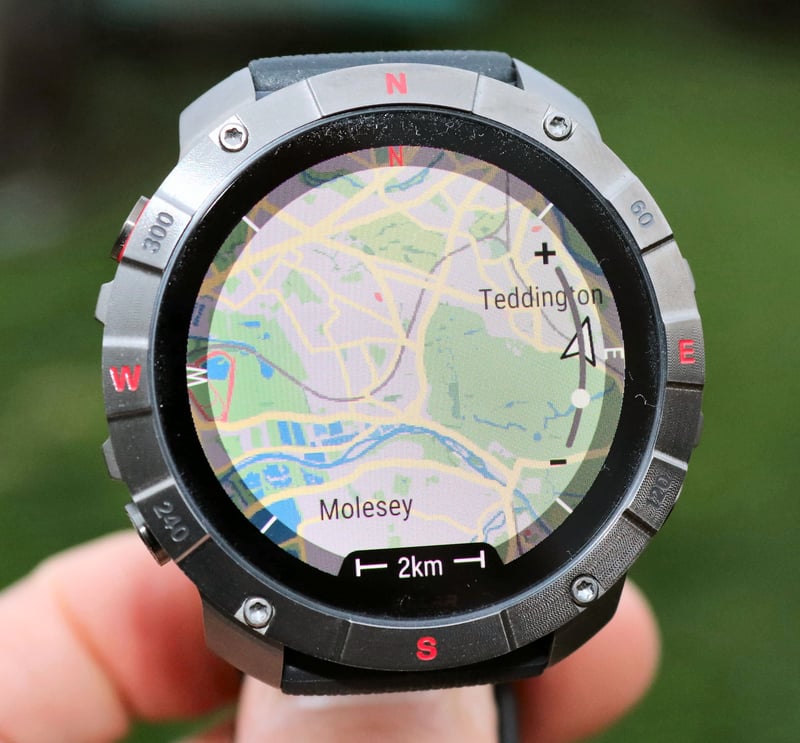
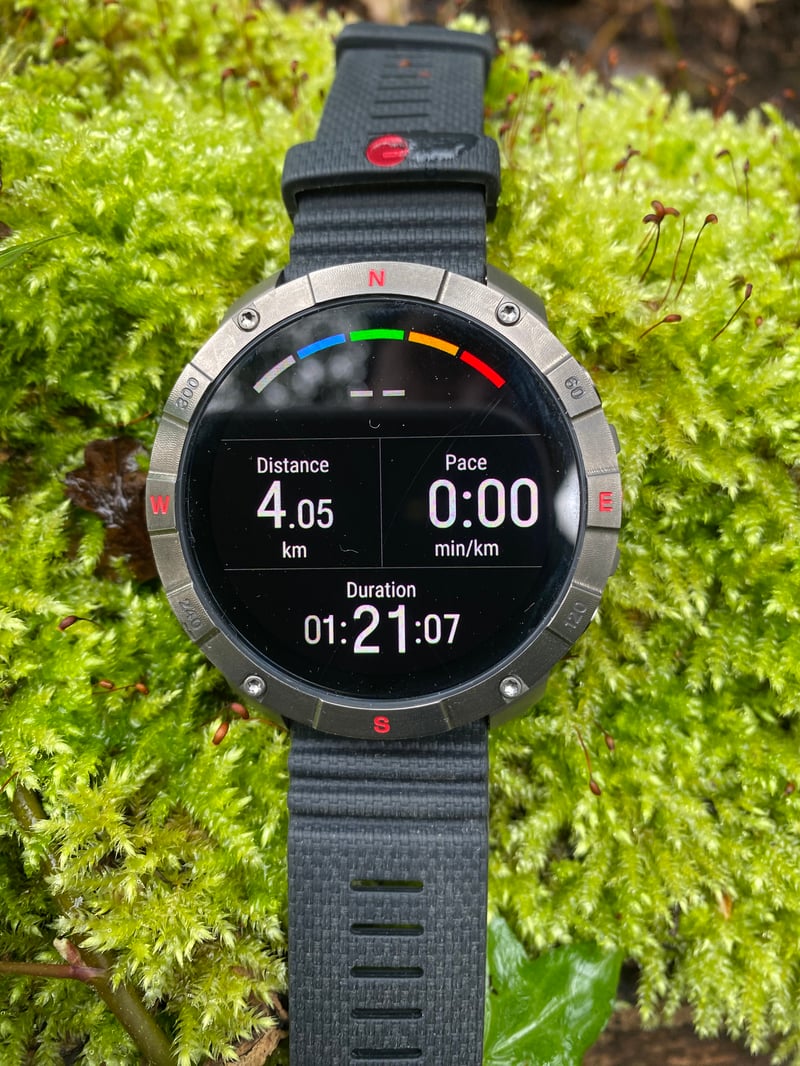




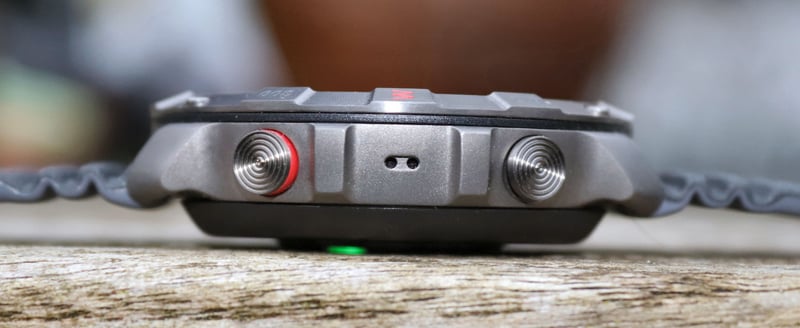


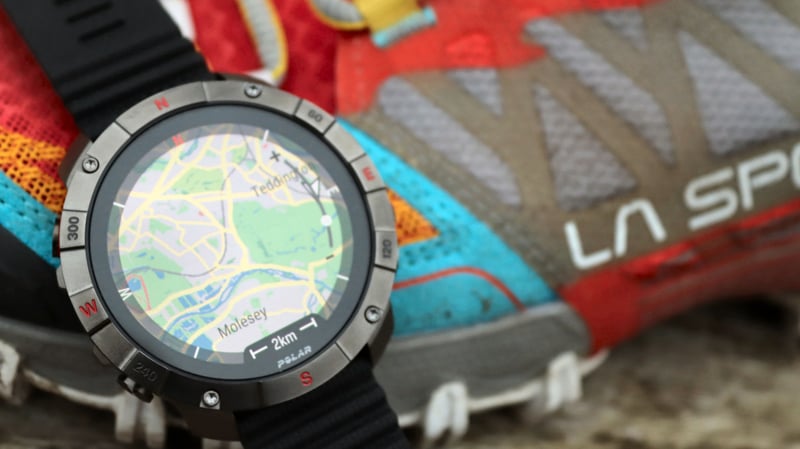
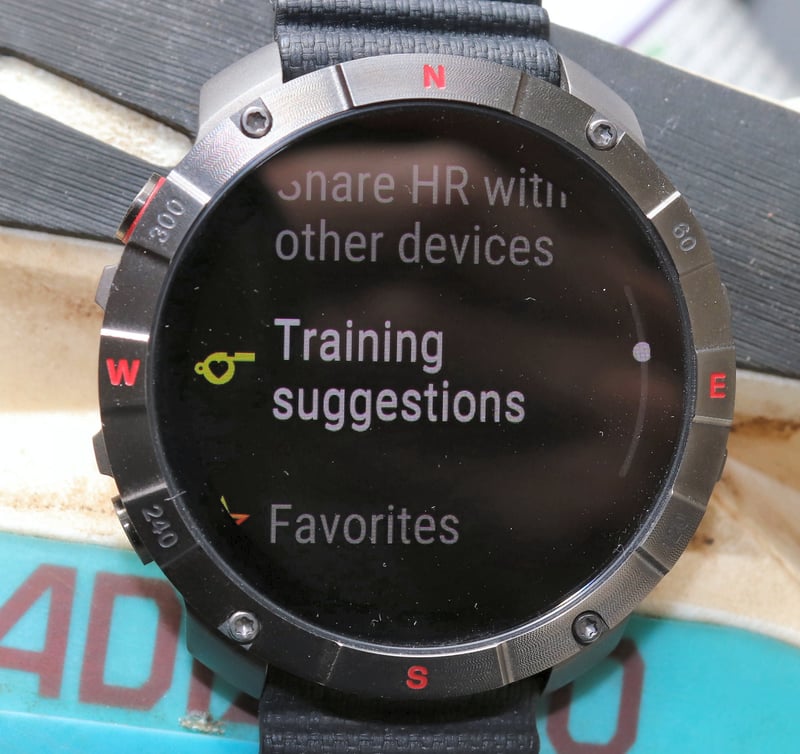
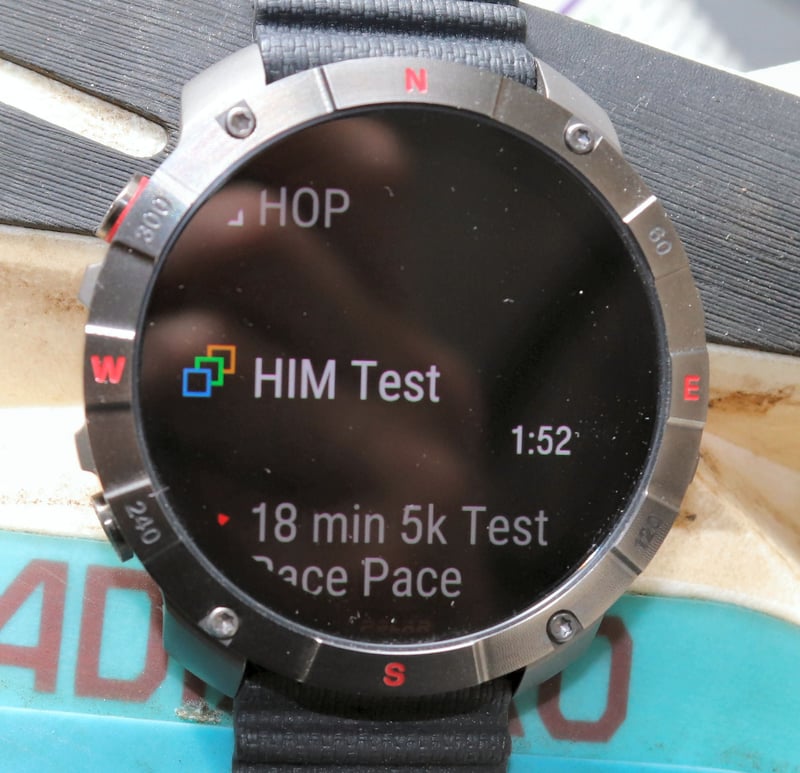
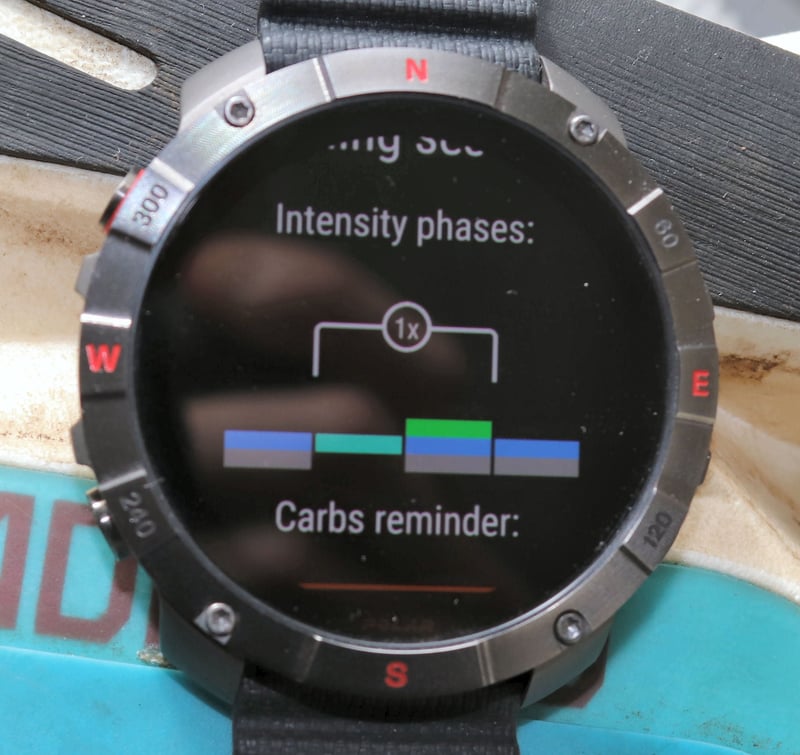

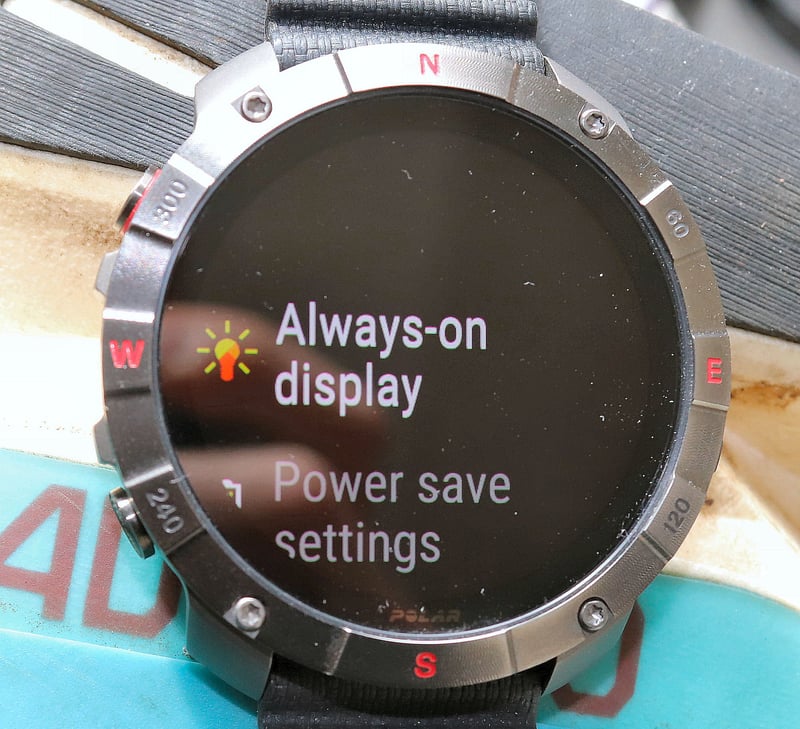
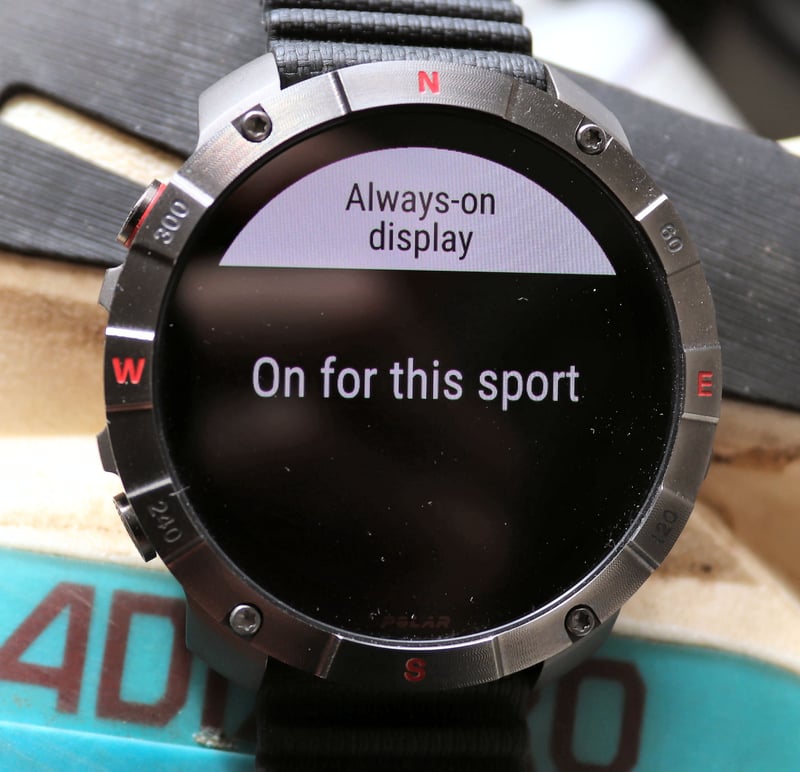
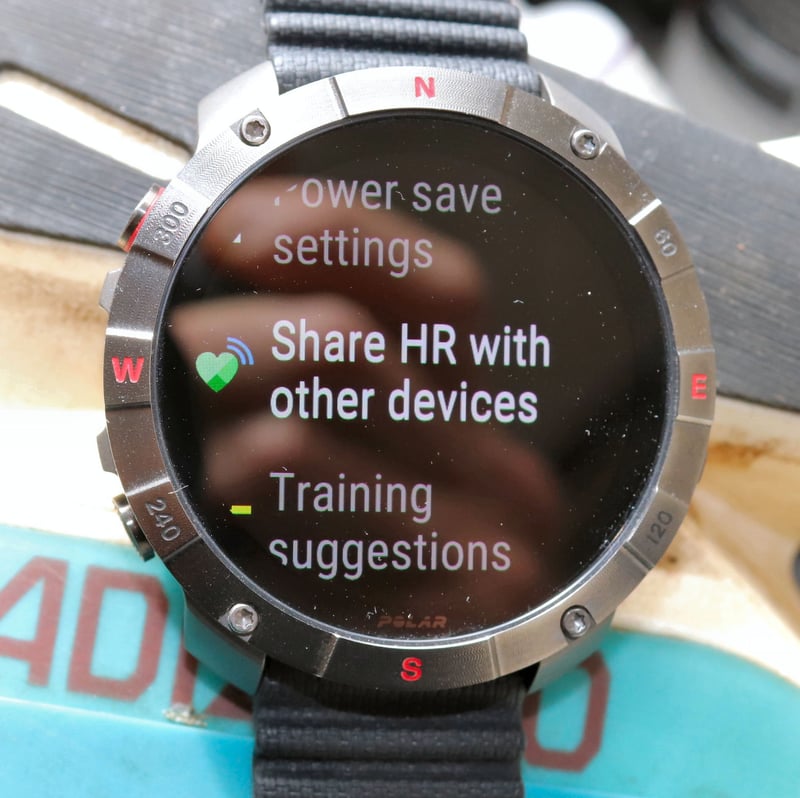
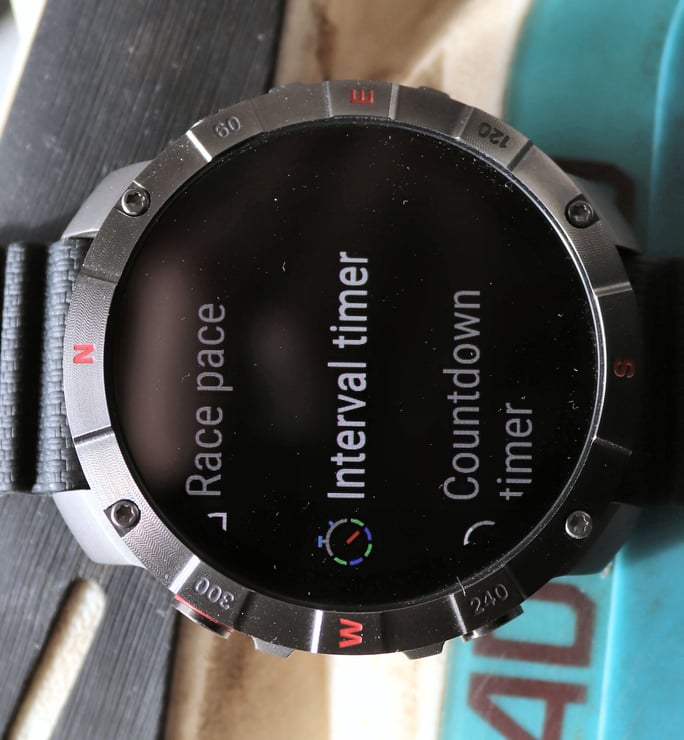
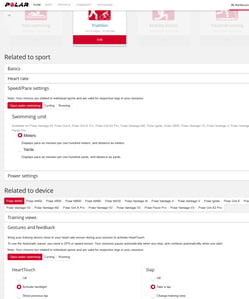
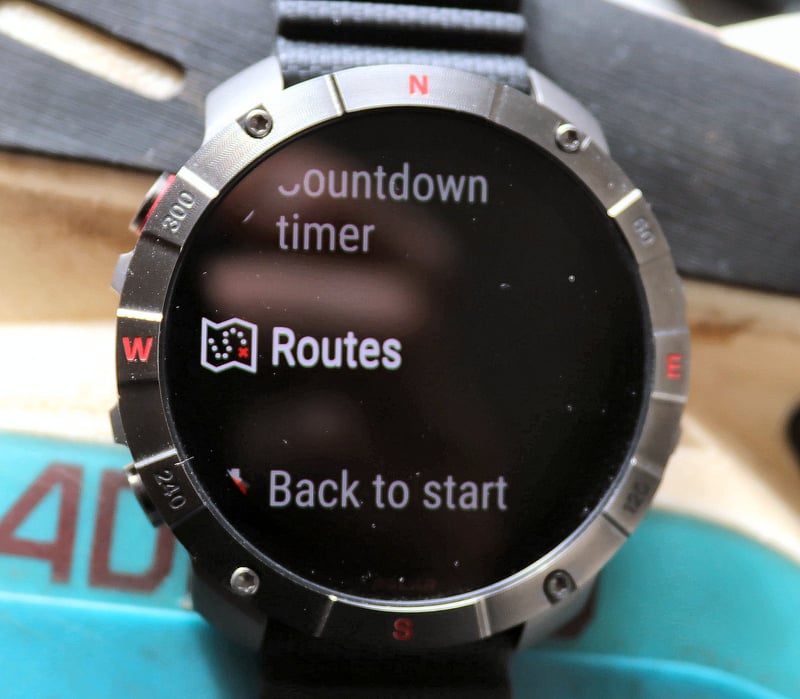


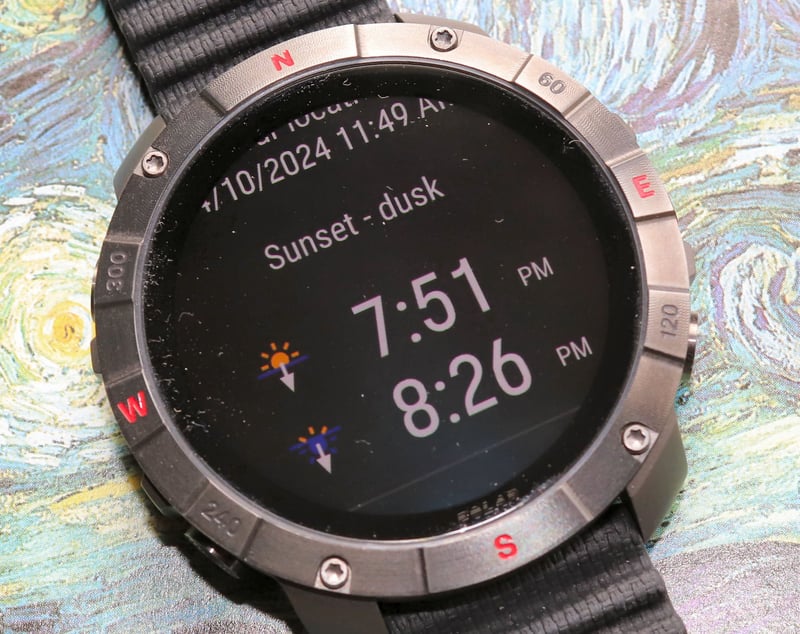
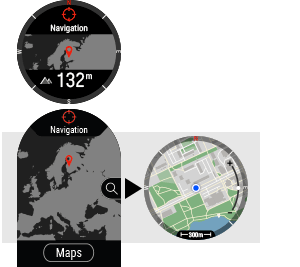
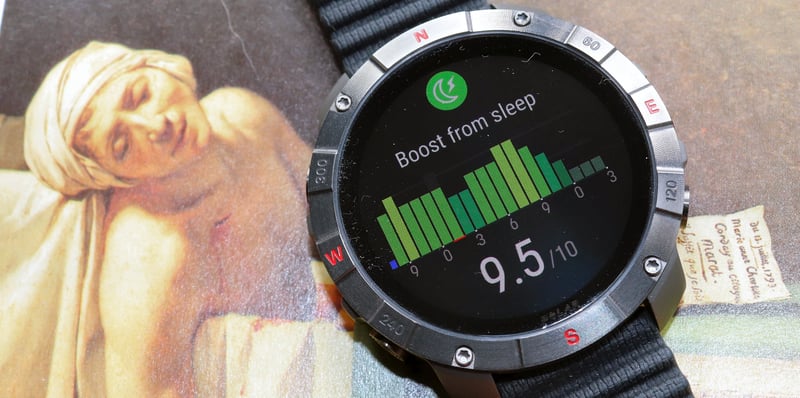

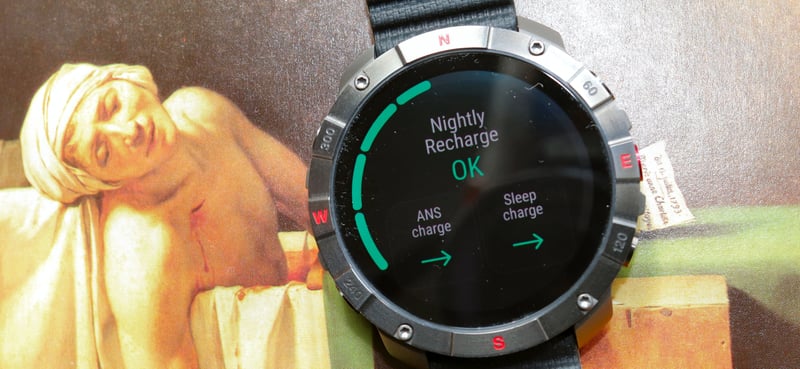

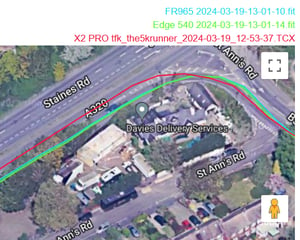
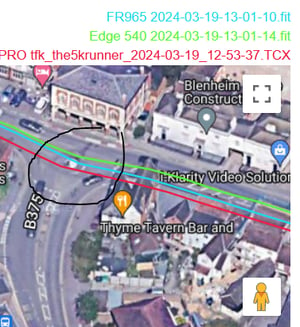
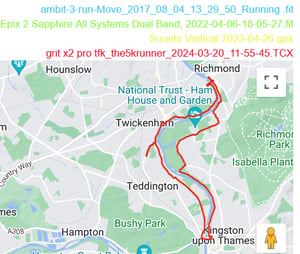
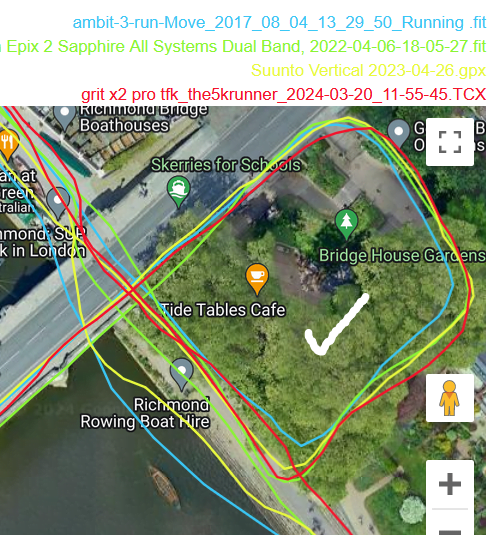

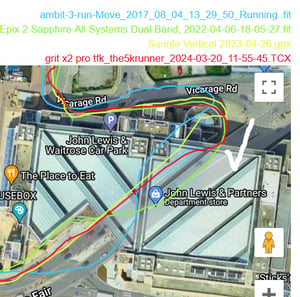

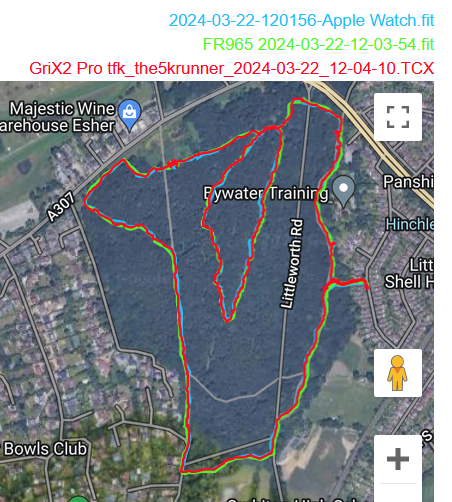

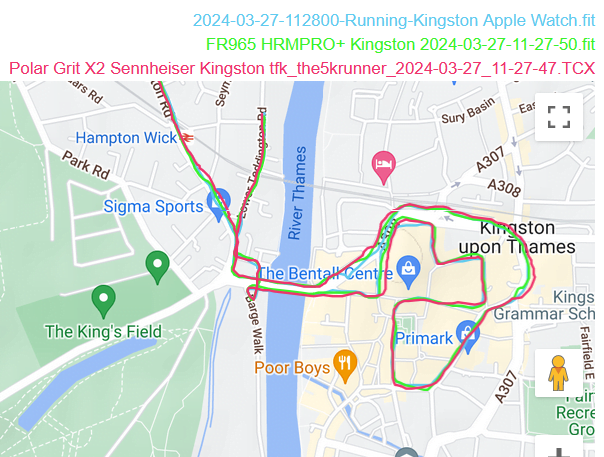
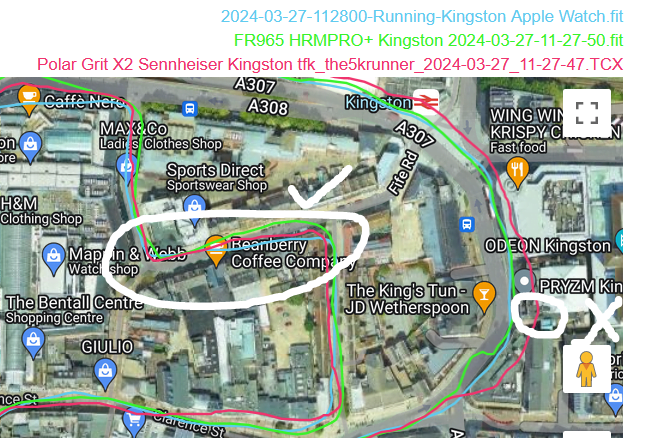
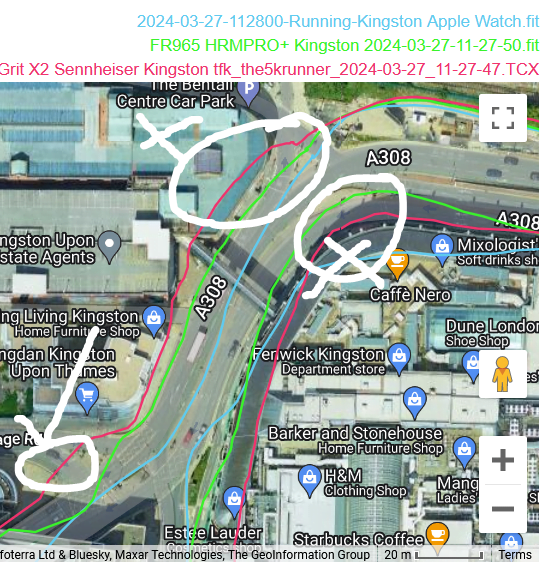

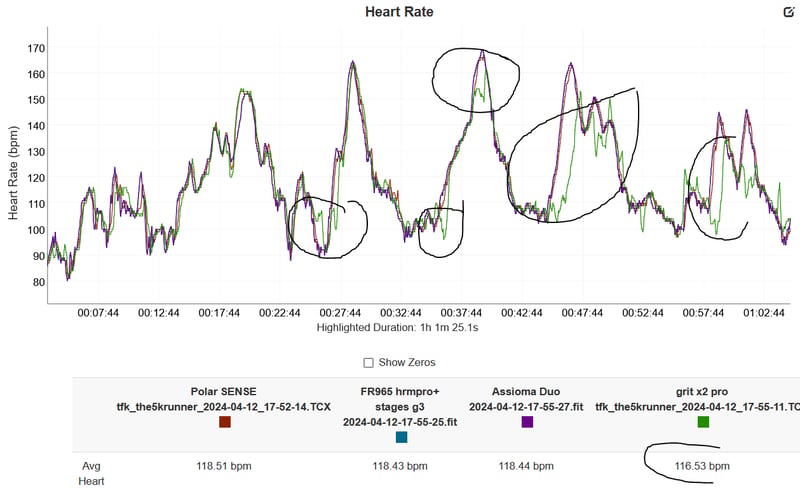
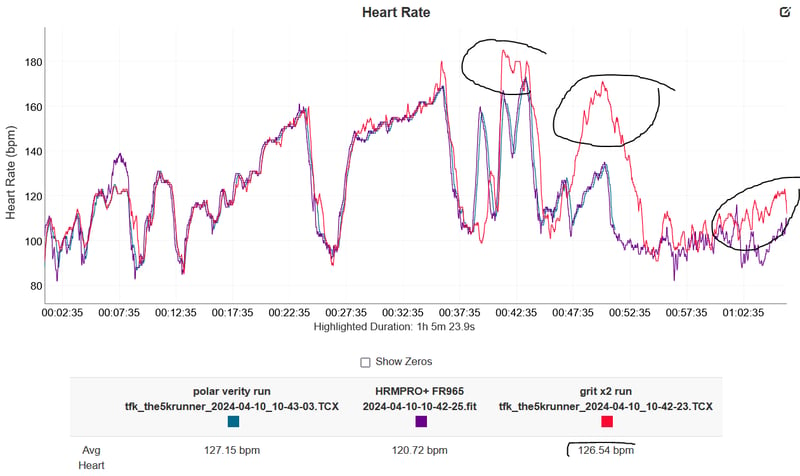

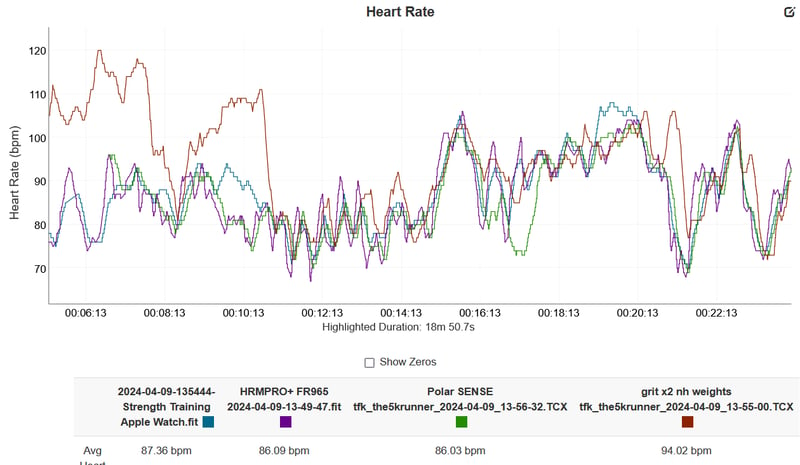


Polar grit x2 pro menudo montón de mierda! Polar está acabada
¿estás bien? amigo
Hi, really nice review, and agree with all your comments (I also own a VV3 as well as a Grit X2 Pro titan),
I only would like to highlight that the new metric as VAM, is not a new metric, is a metric that was included in V800 (only for cycling mode) as well as V650… for me the “gold era of Polar” because these 2 devices are the best devices made by Polar by far… is a pity that due to certain internal problems Polar decided to rescind the Polar team that developed V650 and such fact generated that Polar entered another time in a “black era” (as happened with Rcx 3 and 5)… hoping that the current developing team of Polar products could make some advancements and see if they can “create” a product that could compete “face to face” with their competitors (hoping that in the new future, we can see track mode, drill mode or access to all data collected by Polar devices (ie H10 and or any other device -like Stryd-).
From my side, I’m fascinated with the accuracy of the total time of sleep made by Polar and its new algorithm is close to Oura (I’m only referring to total sleep time)
On the other hand, in your post of VV3 you indicate that Polar will develop a new metric from swimming called “Power Stroke” Do you know when this new metric will be disclosed to the “public” …
As always thanks for your time and great job with your page.
Hi, really nice review, and agree with all your comments (I also own a VV3 as well as a Grit X2 Pro titan),
I only would like to highlight that the new metric as VAM, is not a new metric, is a metric that was included in V800 (only for cycling mode) as well as V650… for me the “gold era of Polar” because these 2 devices are the best devices made by Polar by far… is a pity that due to certain internal problems Polar decided to rescind the Polar team that developed V650 and such fact generated that Polar entered another time in a “black era” (as happened with Rcx 3 and 5)… hoping that the current developing team of Polar products could make some advancements and see if they can “create” a product that could compete “face to face” with their competitors (hoping that in the new future, we can see track mode, drill mode or access to all data collected by Polar devices (ie H10 and or any other device -like Stryd-).
From my side, I’m fascinated with the accuracy of the total time of sleep made by Polar and its new algorithm is close to Oura (I’m only referring to total sleep time)
On the other hand, in your post of VV3 you indicate that Polar will develop a new metric from swimming called “Power Stroke” Do you know when this new metric will be disclosed to the “public” …
Thanks for your time and great job with your page.
thanks David
I was playing with my V650 last week (I sound like a child!!) and reminded myself that it was a great product at the time. it deserved to do better. I think Polar correctly read the writing on the wall that it couldn’t compete in cycling computers.
good point on VAM being a polar cycling metric some time ago. I had forgotten that one
Yes I have rumours that there are new upcoming swim metrics. Actually the rumours were that they should have been already released some time ago. so, sorry, i have no intel on if or when it is happening but i think it will.
Many thanks mate! Then I will ask to my inside contacts of Polar about that 😉! On the other hand confirmed that Polar is working on the [edited out] 😉… V650 one of the best devices that also permits better BLE readings including to be linked with Powerpod (neither v800, m460 or any other device is compatible with Powerpod)… for me v650 is one of the best devices made by Polar … I’m sorry that the current new generation ara against to continue in the bike market 😞. As said thanks for your great work
yes I’d heard they were working on that too, although confess to not believing what I heard! I’ve edited it out as its probably a bit more confidential than swimming metrics!!!
I don’t think you can say that Garmin maps are better than any of the competition, especially now AMOLED screens can chuck out so much contrast.
Bear in mind that all paths and trails on a Garmin map are single-pixel width regardless of the size or type, the course line is narrow and dark, and if you have heat maps turned on, almost exactly the same shade of purple.
sorry, I will clarify. I meant the features that are on the map layers rather thatn the appearance
The truth is that polar completely abandoned cyclist, not even their watches with four data per screen make sense today in cycling and really not in other sports either,not to mention the prices.
I honestly dont understand how polar is still Alive and someone with m460 and vantage m says It…..polar expels us cyclist
This:
« 15-minute warmup with a power alert range of 150-200w: 5 repeats of 1km with a pace target of 4:00/km each followed by 3 minutes recovery; and then all followed by an open cool down.«
Just made me dream of something AI based that could create WO on watches from natural language sentence. Absolutely non polar related though.
I had a Pacer Pro (nice watch, nice price) and then a V3 for testing purposes. I was a bit let down by the lap swimming feature: no intervals detection on watch, I mean, something auto like Suunto, Garmin, Rival that cuts your session when resting at the wall without touching a button.
Otherwise their whole health tracking is really nice. I’d like to see a ring from them.
you can kinda almost do that.
there are tools that already convert written english workouts into a FIT file (or whatever) to guide a workout. Adding language recognition over that would be pretty ‘easy’. I think FORM swim did that a year ago and from memory there wa another one as well linked to trainingpeaks.
NFC Payment solved …. https://www.polar.com/en/payment-wristband-22mm … let’s see if we can see the TP integration in the following days
yeah i saw tht. I heard rumours 6 months ago but didn’t beleive them!!